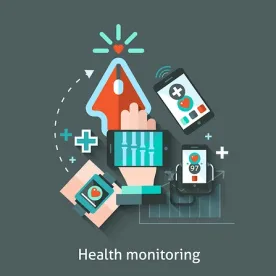The American Society for Health Care Human Resources Administration (ASHHRA) recently held an incredibly useful conference bringing together healthcare human resources leaders from around the country. Here are four key takeaways from that gathering of thought leaders.
-
Employee Engagement Impacts Patient Care and Revenue
While this may seem self-evident to those on the front lines, there also is data to back this up. At a time when revenue is increasingly tied to patient satisfaction and quality metrics, strong employee engagement is not only the right thing to do, it is a financial imperative. Take for example one speaker’s reference to a Press Ganey study, which he explained showed a 1 percent change in employee morale equals a 2 percent change in the patient experience. Consider this connection between patient experience and revenue: a Harvard Business Review study found “a five-point increase in hospital rating is associated with a 1 percent increase in profit margin.” HR leaders are well-positioned to make the case for strong employee engagement programs.
-
Innovative Recruiting and Staffing Alternatives are a Must Have
Speakers at the conference discussed many of the recruiting tools covered in this recent Healthcare Workplace Update post. There were two other areas of interest on this front. First, the increasing use of predictive data analytics in recruiting. This is an investment that may yield significant dividends by reducing turnover or at least making it more predictable. Another topic was creating an internal staffing agency. This approach can reduce agency costs while retaining nurses and other professionals by meeting their desire to travel and work at different facilities.
-
Plan for More Active Regulators
Speakers addressed the likelihood that regulators would be more active in the healthcare field than they have been in recent years. With new Equal Employment Opportunity Commission (EEOC) commissioners appointed by President Biden, the EEOC likely will publish more guidance on anti-discrimination laws and focus more on alleged systemic violations of those laws. On the accreditation front, The Joint Commission and other accreditors are adopting new survey approaches to measure compliance with the CMS COVID-19 vaccine rule. Finally, OSHA is in the midst of a “highly focused” inspection initiative aimed at hospitals, skilled nursing facilities, and assisted living facilities that treat or handle COVID-19 patients and have been previously cited or inspected for COVID-19 concerns that will continue until June 9. HR leaders can take a leading role in helping their organizations prepare for these new regulatory challenges.
-
If You Don’t Engage Employees, Labor Unions Will
While union membership is at a record low in the U.S., several factors make today’s workplace fertile ground for union organizing. First, according to a study by McKinsey, “the top three factors employees cited as reasons for quitting were that they didn’t feel valued by their organizations (54 percent) or their managers (52 percent) or because they didn’t feel a sense of belonging at work (51 percent).” Second, according to a Gallup poll approval of labor unions is the highest it has been since 1965, with 68% having a favorable view of unions. That figure jumps to 77 percent among people ages 18-34 and 70 percent for college graduates. All these factors make clear that healthcare employers who want to be union-free need to invest in creating a culture where employees feel valued by their organization and their manager. HR leaders can play an integral role in establishing this kind of workplace culture.




 />i
/>i
